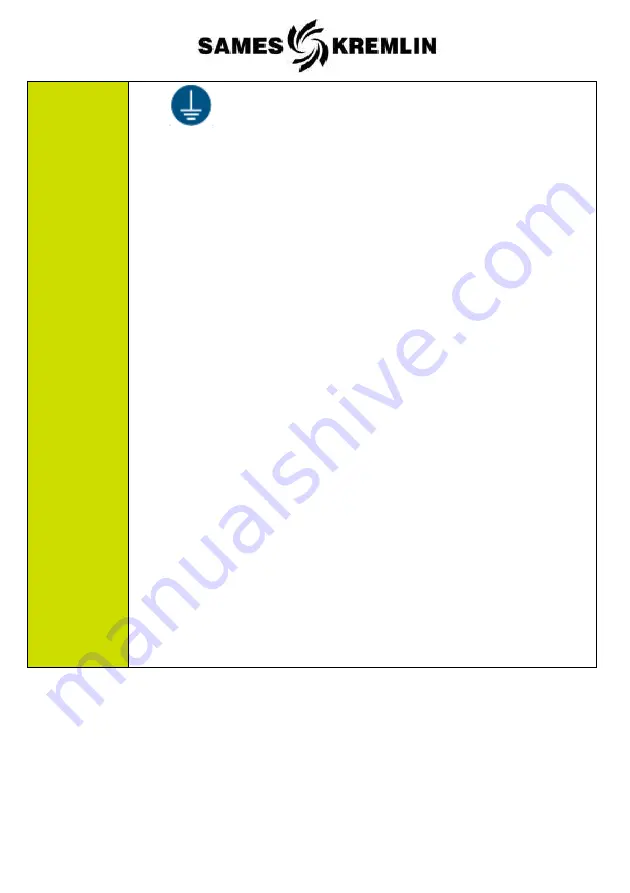
5
Grounding
•
In order to prevent the accumulation of electrostatic charges
which could generate an electric arc in a flammable or explosive
environment, it is necessary that all conductive components of the
system are grounded.
•
The gun must be
‘grounded’ via the fluid hose or the air hose.
•
The equipment to be painted must also be ‘grounded’ by means of
clamps fitted with cables or, if suspended, by means of hooks which
must be kept clean at all times.
•
Follow the shutdown procedure and always depressurize air and fluid
circuits before carrying out any servicing on the gun (cleaning
checking, maintenance of the fluid or cleaning of the gun nozzles).
•
This gun is a precision tool. Its proper operation requires frequent and
careful maintenance.
•
If it is carried out immediately after work, cleaning is easier and quicker.
•
Never use wire brushes, files or pliers for disassembly.
•
Before cleaning or disassembling any component of the equipment, it is
imperative:
-
to stop the pump by cutting off the compressed air supply,
-
to decompress the hoses by pulling the trigger.
•
Never store more than necessary inflammable materials inside the
working area.
•
These materials must be stored in approved drums and grounded.
•
Use only grounded metals containers for cleaning solvents.
•
Cardboard and paper are prohibited.
•
The tanks of fluids and cleaners must be grounded via a grounding
cable, either by means of clamps or some other means of attachment.
•
The parts to be painted are hung or placed by means of hooks or
supports which are grounded and kept clean at all times, in order to
always guarantee good conductivity to ground.
•
All insulation (cardboard, paper, plastic materials) must be kept to a
minimum in the work area.
•
The ground continuity must be checked by a qualified technician.
•
Never operate the equipment without ensuring that all the above
safety requirements are met.






































